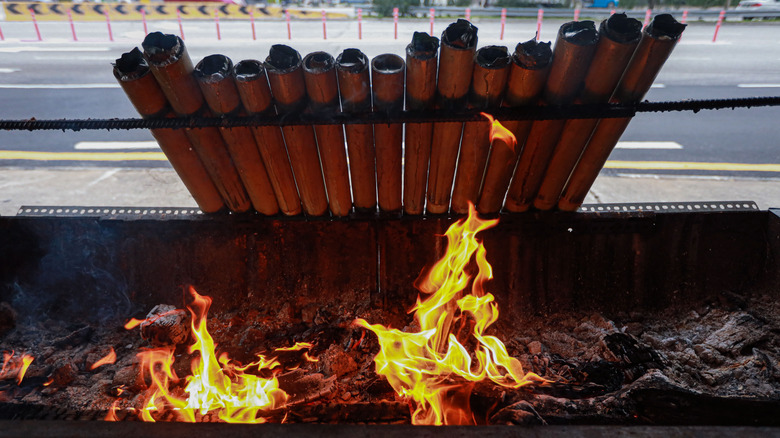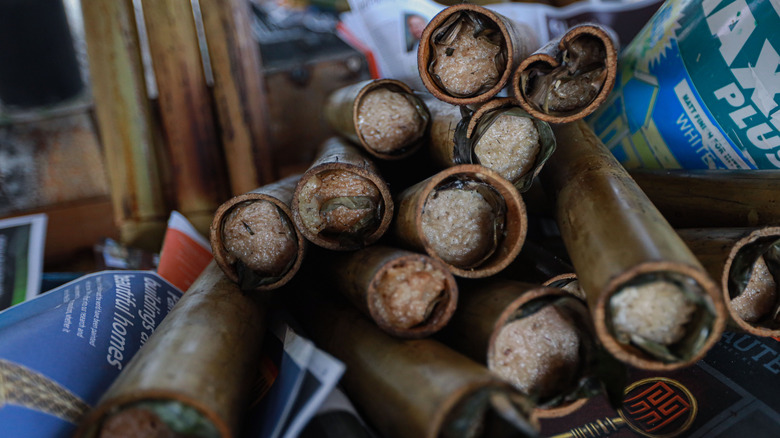The Traditional Thai Cooking Method That Utilizes Bamboo
From grilling kebabs on bricks to wrapping food in banana leaves, many dishes employ uniquely specific cooking methods. Such techniques utilize readily accessible local components in a crafty way, resulting in dishes with a distinct flavor. In the tropical climate of Thailand, such a regional-specific method calls for bamboo. Especially common outside of large cities like Bangkok, such a preparation method can be ubiquitously spotted among roadside vendors, overflowing with cut sections of the wood-resembling grass. A centuries-old method, the resultant dish was traditionally presented to monks.
Inside, ingredients like sticky rice, chicken, fish, vegetables, or noodles are stuffed into these foot-long cylinders and capped with leave fillings at the ends. Typically, a liquid — like water or coconut milk — is introduced to lend moisture to the components, and the dish is cooked over an open flame or hot coals for several hours.
The ingredients meld together in an aromatic cooking method that mixes steaming and grilling. Bamboo lends a natural, delicate flavor and also makes for an eye-catching serving vessel, oftentimes enjoyed on the go. Plus, such a traditional method can come together sans kitchen — whether it's on the roadside, in a backyard, or in the jungle.
Thai cuisine employs bamboo to prepare meats and sticky rice
Especially in more rural settings, this bamboo cooking method is employed for any ingredients on hand — whether it's fresh-caught fish, chicken, or a packet of instant noodles. However, the dish is most interlinked with the preparation of khao lam, a sticky rice dessert. Also popularly prepared in neighboring Cambodia and Laos, the technique mixes the rice with coconut milk, beans, and sugar before throwing it over an open flame.
The result is pudding-like, with the components congealing into an aromatic whole. There's a pleasantly vegetal flavor from the bamboo, and the dessert is good to eat for up to two days after preparation. Plus, it's customizable with additional fruits, like durian or jackfruit. Enjoyed on the go — often advertised as a roadside treat — it best showcases the technique's useful nature.
Moreover, the method isn't confined to such a regional preparation. In South Asia, bamboo tubes are also used to make everything from curries to meat dishes, and vegetables. In this region, it's utilized also as a method of slow cooking, combining flavors of spices and aromatics with rice or root vegetables. Plus, sometimes, the components are layered, resulting in complex combinations of spice, starch, and marinated protein. However, no matter the region, each method showcases the bamboo vessel's expansive possibilities.

